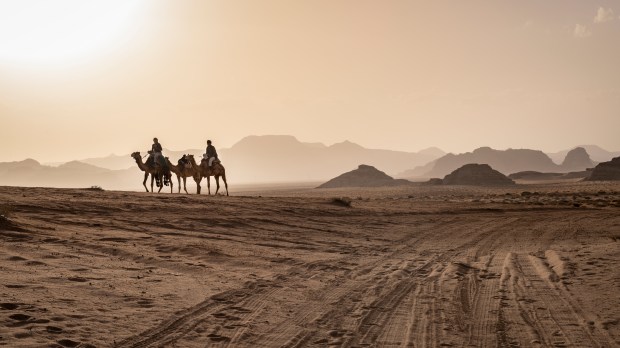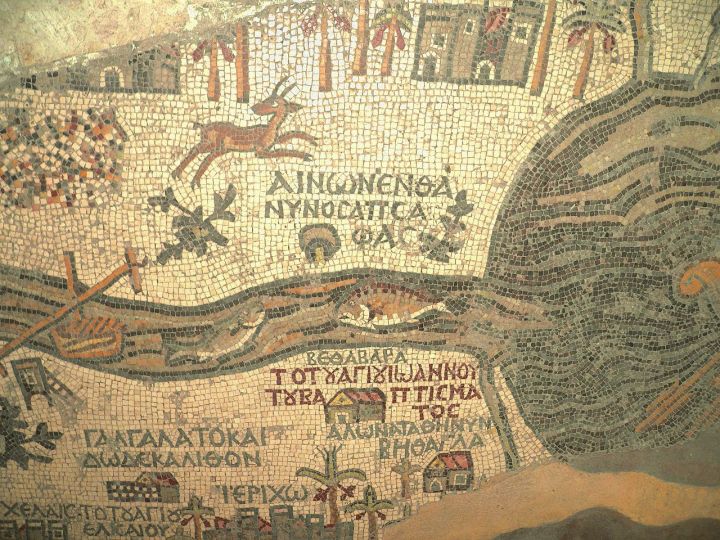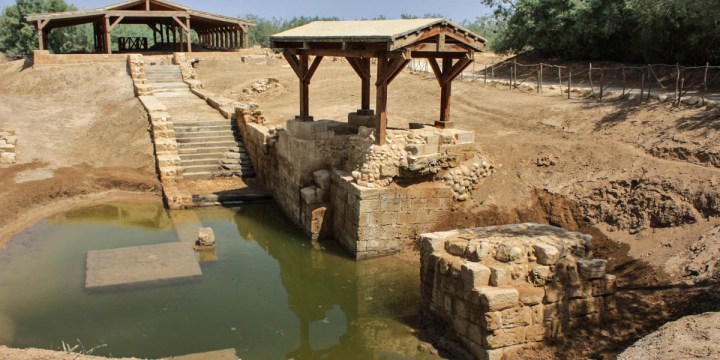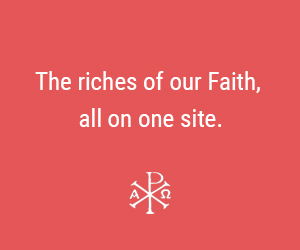Biblical tradition claims Moses walked all across Jordan, from the Red Sea in the south all the way to the north to Mount Nebo — the famed mountain from where he spotted the Holy Land, nowadays home to the modern Memorial Church of Moses, built right next to the remains of an ancient Byzantine church that has been a pilgrimage site since the 4th century. The building is first mentioned in an account of a pilgrimage made by the Christian woman Egeria in 394.
Moses is a constant presence in Jordan — as much as Elijah, John the Baptist, and Jesus. The nearest town to the ancient, imposing Nabatean city of Petra (just to name one) is called Wadi Mousa, “the Valley of Moses.” Local traditions explain that, as Moses walked through this valley, he struck water from the rock at the place now called Ain Mousa, “the well of Moses.” It is from this very same spring that the Nabateans drew water (through a clay aqueduct that is still very much there) all the way to Petra, the biblical “Sela” (Cf. 2 Kings 14, 7; or 2 Chronicles 25, 12). This town, Wadi Mousa, is also said to be the burial place of Moses’ brother, Aaron: local guides tell the pilgrim that his burial place can be found nearby, high atop the neighboring Mount Hor.
Nowadays, pilgrims can ride (or drive) across the stunning Wadi Rum desert at sunset, discovering ancient petroglyphs and caves where hermits would devote themselves to a life of asceticism and prayer, following the steps of Elijah and the Baptist. Contemplating the stars while sharing tea and a hot meal in the desert in the middle of a cool night, enjoying the well-known hospitality of the Bedouins, reminds the visitor of the promise made to Abraham: “I will multiply your descendants beyond number, like the stars in the sky and the sand on the seashore.” In Jordan, all biblical references come alive.
The many different paths the pilgrim can discover in Jordan are all bursting with religious meaning: these are all the same landscapes Moses, Aaron, Elijah, the Baptist, and Jesus walked through. Here, we wanted to share with you seven of the most fascinating destinations Jordan offers the visitor.
1. Madaba
Driving through the King’s Highway, half an hour south of Amman, one finds Madaba. This city, which belonged to the Moabites, the Nabateans, the Romans, the Byzantine, the Rashidun and the Umayyad throughout history, is now home to the biggest Christian community in all Jordan. The Greek Orthodox church of St. George is home to some of the most beautiful icons in the region, and also to the legendary Madaba Map, an intricate floor mosaic dated to the 6th century — the oldest cartographic depiction of the Holy Land preserved to this day.
2. Tel Mar Elias: Elijah’s birthplace
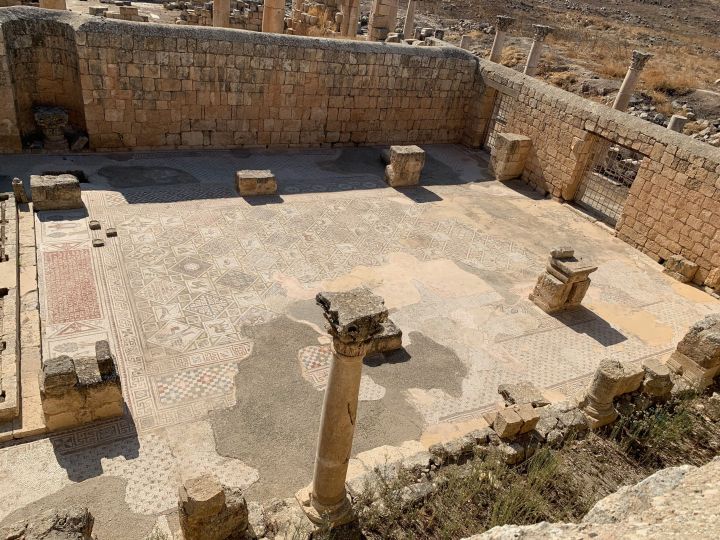
Tel Mar Elias, the birthplace of Prophet Elijah, is in the biblical Gilead, in Northern Jordan. Near the ruins of the historical Listib (referenced as “Tishbe” in 1 Kings 17:1), two Byzantine churches were built around the 6th century. One can still see some of the surviving mosaics in place. Pilgrims from all Abrahamic religions (Judaism, Christianity, and Islam mainly) come here to tie red ribbons to an oak tree, paying homage to the prophet.
3. Wadi Rum
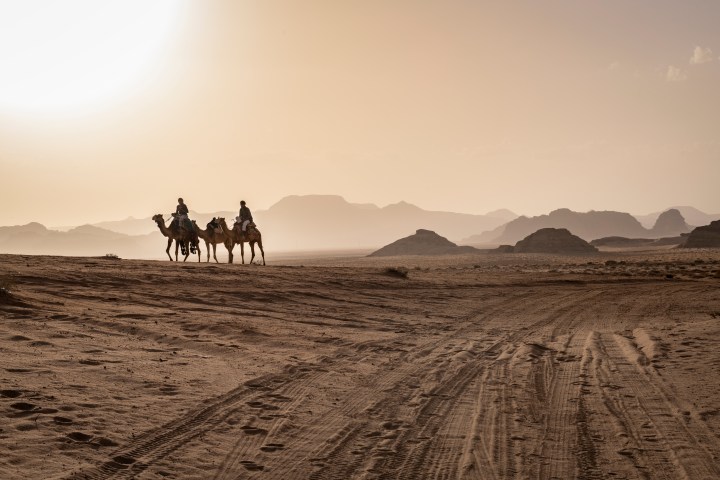
Before the days of the Rashidun Caliphate, the Wadi Rum desert belonged to the Nabatean kingdom, then to the Roman empire and, finally, to the Byzantines. It was during this last period when, historians explain, it got its current name: the inhabitants of the desert — mainly Bedouin tribes who either worshiped Roman gods or had already become Christians — would refer to the Christian monastic and ascetic communities established in the region as “Rum,” a word that would apply to Eastern Romans and Greek alike. The desert is nowadays a prime adventure destination, while also a popular pilgrimage site.
4. The Jordan Trail
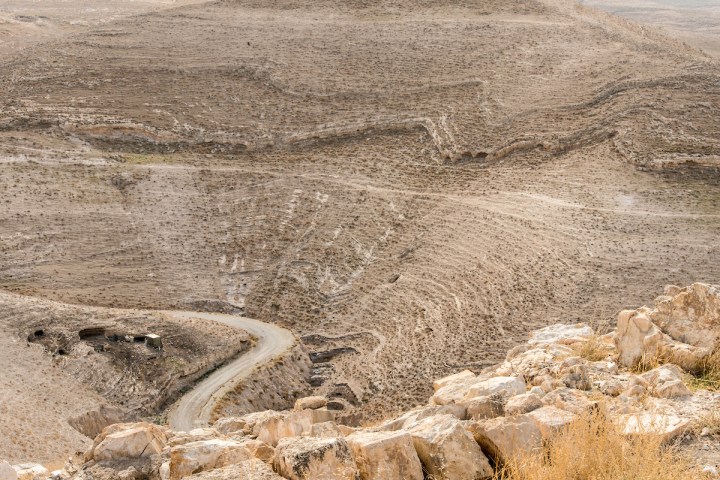
Although officially launched in April 2017, this trail runs through ancient biblical, almost legendary routes, as well as through the route Roman conquerors would use to go all the way from the fertile north of Jordan to the south, starting in Garada (Um Qais) and through the impressive Roman city of Jerash, to the rich harbor city of Aqaba, right by the Red Sea. Extending for 400 miles, the Jordan Trail goes through 52 villages, four different kinds of landscapes (from red sand cold deserts to fertile green valleys with thermal waters), and several ancient pilgrimage and trade routes.
5. Petra
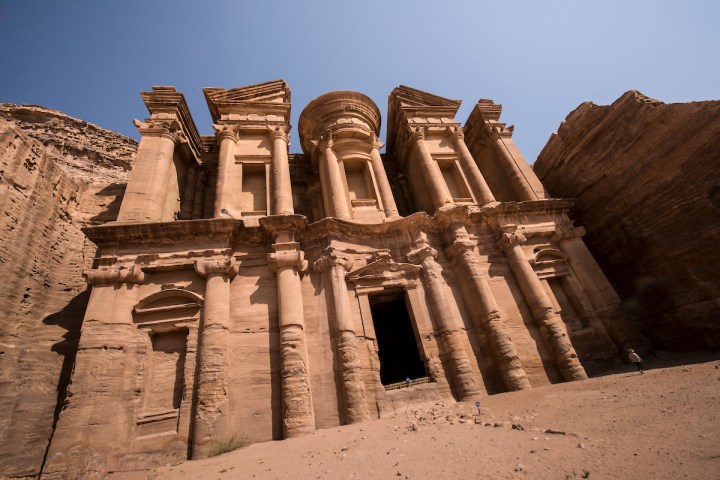
Not many people know Petra is indeed a biblical location. That is because the ancient Nabatean city is mentioned in the Bible by its name in Hebrew, Sela (Cf. Isaiah 16:1, and 2 Kings 14:7). Both names, Petra and Sela, mean “rock,” obviously referring to the fact that most of this astounding city is carved into sandstone cliffs. One of these cliffs, Jabal Harun, is said to be Aaron’s tomb. Scripture explains Petra was in the land of the Edomites, the descendants of Esau, Isaac’s son. More than 150 papyri were once found in Petra’s famous Byzantine church, built as early as in the 2nd century. Consumed by a fire in the 7th century, its remains are still impressive.
6. Machaerus
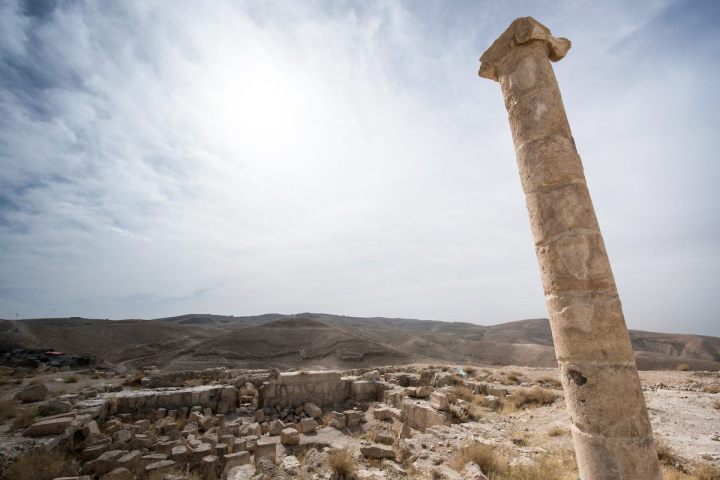
On the eastern side of the Dead Sea, and about 16 miles southeast of the mouth of the Jordan River, the hilltop where the fortified palace of Mukawir (“Maxairous,” in Greek; “Machaerus,” in Latin) stands. This palace used to belong to King Herod, and is known for being the place in which, according to Flavius Josephus, John the Baptist was beheaded. Only a few marble columns and stone walls remain from the original palace, but from thehilltop one can perfectly well see the many small caves that hermits, anchorites, and monks carved into the sandstone to live a life of prayer.
7. The Baptism Site
Known as Al-Maghtas (meaning “immersion” and, by extension, “baptism” in Arabic), this place has been considered since Byzantine times to be the original location of the baptism of Jesus. It is also the area in which John the Baptist lived and ministered, and the site of the Ascension of the Prophet Elijah to Heaven. Situated on the eastern bank of the River Jordan, nine kilometres north of the Dead Sea, this archaeological site consists of two areas: Jabal Mar-Elias (Elijah’s Hill) and the area of the churches of St. John the Baptist near the river. In both sites, several Roman and Byzantine remains can be found, including churches, chapels, and the caves hermits used to live in. Pilgrims from all around the world come here to visit the place where the Synoptic Gospels claim the heavens opened when Jesus was baptized.
This content has been brought to you in partnership with the Jordan Tourism Board.

